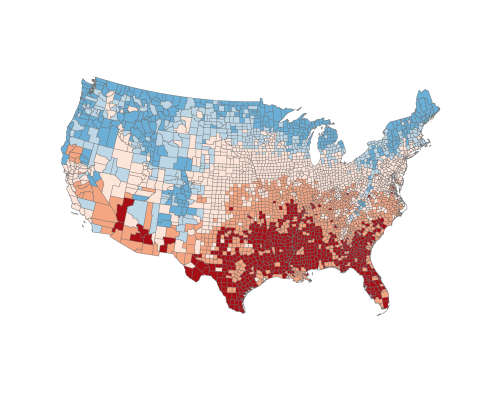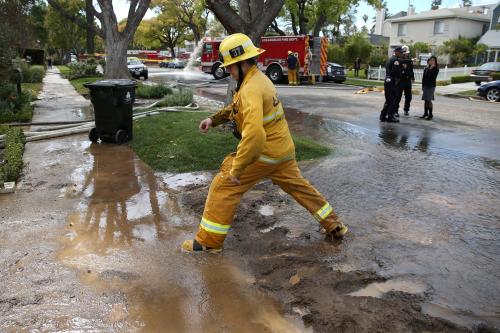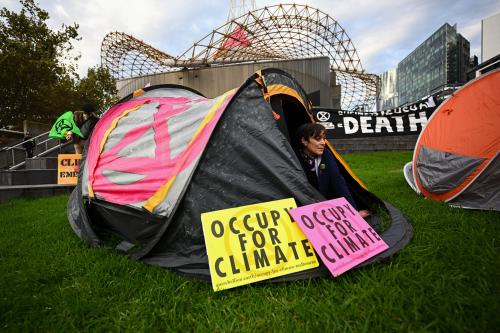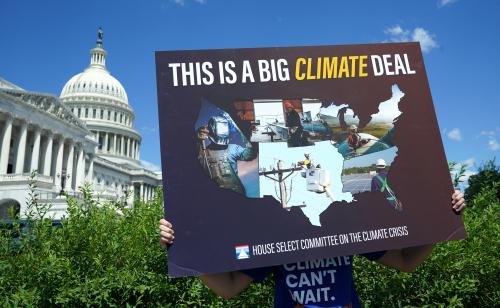Considering the depth of our climate crisis, one positive sign is increased attention. Democratic hopefuls are introducing various plans to combat the crisis, leading to an arms race for the boldest proposals and largest investments. CNN and MSNBC both hosted extensive town halls on the topic. And this blog coincides with Climate Week NYC, a series of events run in coordination with the UN to accelerate global climate dialogue and action.
Most of the coverage to date has focused on what it will take to reduce global emissions and protect the most vulnerable populations. Candidates have also started to talk about how to implement economy-wide changes, including the price tag and funding options for specific programs.
But the nuts and bolts of who will implement these programs is still largely missing from the national discussion, and especially within the federal government.
For an issue as multifaceted as climate change, it can be tempting to focus on the biggest of the big ideas, and it’s easy to assume that the best results will come from the largest institutional shifts: creating a White House climate czar position, or establishing a new Cabinet-level Department of Climate Change.
That’s a false choice. Despite the urgent need for large-scale action, or perhaps because of it, there is a strong case for making immediate and incremental investments to drive institutional change. The good news is there is already a model for this type of action in the federal government: 18F.
Despite the urgent need for large-scale action, or perhaps because of it, there is a strong case for making immediate and incremental investments to drive institutional change. The good news is there is already a model for this type of action in the federal government: 18F.
Originally established in 2014 as a scrappy unit of technology experts tasked with upgrading antiquated federal IT systems, 18F now employs about 120 people as part of a larger digital services unit in the General Services Administration (GSA).
While 18F sits within GSA, it serves every federal agency. And because of its targeted mandate, nimble structure, and focus on results, the 18F team has successfully reduced costs and enhanced services across the federal government, from streamlining land permits to improving access to crime data.
But the climate crisis can’t just be solved through technology. Above all, what matters is getting the right people in place and giving them the flexibility to drive results. To that end, the 18F model can serve as a template for staffing, funding, and growing a new, dedicated federal “18F-Climate” unit.
Just as 18F started as a small experiment within the White House, a new administration could quickly establish an 18F-Climate, too. The mandate of this unit would be straightforward: slash emissions from federal agency operations, and measurably reduce risk to agency assets, operations, and communities served through increased investment in adaptation and resilience.
18F-Climate, which could start as a temporary unit within the White House, can follow lessons from 18F’s launch. At its earliest stages, 18F relied on attracting tech talent from Silicon Valley into public service on short-term assignments. This same staffing approach could quickly recruit a deep bench of resource and risk management experts from industry and academia, in addition to attracting climate innovators with a proven track record of results.
Any new climate unit would also be well-served by 18F’s budget and cost-recovery structure, which help insulate it from the politics of annual appropriations cycles. 18F requires federal agencies to request their services on a pay-by-project basis, which incentivizes program managers to identify and champion high-value projects that pay for themselves quickly.
18F-Climate would also need to develop clear performance measures, an essential ingredient to hit national climate goals. Such performance measures would incentivize federal agencies to demonstrate short-term progress on emissions reduction targets and resilience metrics. Effective measures can also help quickly reveal any pitfalls or unintended consequences from 18F-Climate’s projects. These results can directly inform evidence-based best practices within the federal government and translate successes to state and local governments dealing with their own at-risk assets, communities, and programs.
Designed well, 18F-Climate has an ideal customer. The enormity of addressing the climate impacts of the federal government—the country’s largest land owner—cannot be overstated. In its March 2019 High-Risk Report (pages 110-122), the Government Accountability Office noted that climate change poses major fiscal risks for the federal government, including flood and crop insurance programs, disaster aid programs, and federal assets and lands. Having a dedicated, results-oriented team within government to serve the managers of these programs can provide both the inspiration and the space to test new ideas and take immediate, practical, institutional action.
Progress has to start somewhere. Presidential hopefuls should by all means think big on climate, but they should also think small too. 18F-Climate could be the kind of small-scale intervention that can turn massive campaign promises into real climate solutions.







Commentary
How a scrappy federal IT program can be a model for US climate action
September 24, 2019